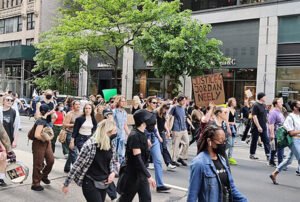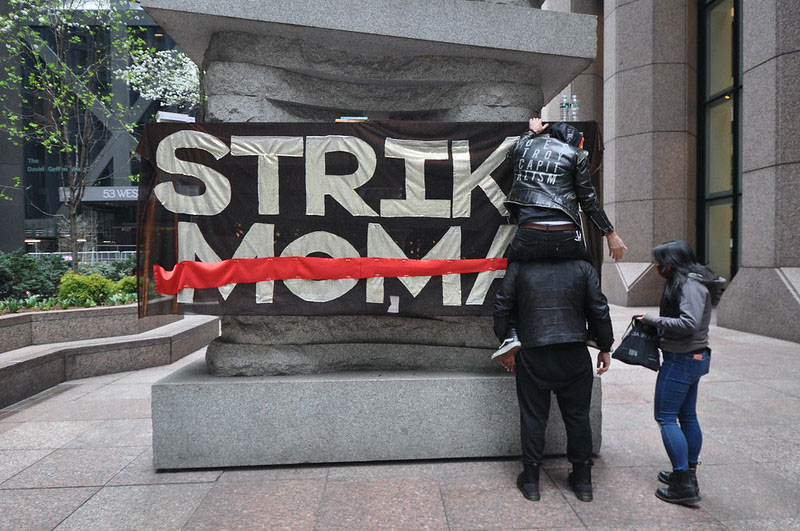
July 10, 2018; In These Times
At NPQ, we often write about what are known as anchor institution strategies, in which nonprofits (especially “eds and meds“) and local governments leverage their spending to support local economic development. For example, in the United Kingdom, a “buy local” strategy in Preston and the surrounding county of Lancashire is estimated over the course of four years to have supported 1,600 jobs “by using…institutions and local government contracts to keep money in the local economy.”
But as Stacy Mitchell and Olivia LaVecchia of the research and advocacy nonprofit Institute for Local Self-Reliance (ILSR) explain in Amazon’s Next Frontier: Your City’s Purchasing, Amazon has other ideas. Think of Amazon’s approach as an anchor institution strategy in reverse—one in which public procurement dollars, instead of being reinvested in the community, flow outward.
As David Dayen of In These Times explains, last year “Amazon won a contract to supply up to $5.5 billion in commercial items for states, cities, and school districts through its Amazon Business platform.” Under the deal, local suppliers can still sell to participating local governments, “but only if they join Amazon’s platform, and pay the 15 percent share of revenue that Amazon takes for access.” State and local government procurement totals close to $2 trillion, so we are talking about a large potential market here.
The contract obtained by Amazon comes from a group purchasing organization called US Communities. The contract period began in January 2017 and lasts for five years, with the potential to be renewed for a total of up to eleven years. Dayen notes that US Communities “facilitates joint purchasing agreements for its 55,000 members, in exchange for a small piece of the revenue.”
But this is hardly Amazon’s only route to public procurement dollars. Mitchell and LaVecchia note that Amazon has also “made deep inroads into defense contracting and other federal spending, including with the passage this year of legislation directing the General Services Administration to solicit contracts for ‘e-commerce portal providers’ to supply federal agencies with commercial goods.” Amazon is widely seen as angling for a $10 billion federal contract.
Of course, Amazon is hardly the only large firm to bid on public procurement contracts. What Amazon has been able to do, however, is lobby to structure requests-for-proposals in ways that make it unlikely for other firms to be competitive. The lack of competition, of course, then enables Amazon to negotiate better deals after the contract has been awarded.
Sign up for our free newsletters
Subscribe to NPQ's newsletters to have our top stories delivered directly to your inbox.
By signing up, you agree to our privacy policy and terms of use, and to receive messages from NPQ and our partners.
As Andy Braithwaite of Office Products International noted when Amazon won the US Communities contract, “Whereas US Communities contracts have traditionally involved individual product categories such as office supplies…the new contract awarded to Amazon Business was bid as a nationwide online purchasing agreement covering a multitude of product categories. These include, but are not limited to, books, office supplies, classroom and art supplies, home and kitchen, musical instruments, audio visual and electronics, clothing, animal supplies, scientific equipment and lab supplies.”
Guess how many companies other than Amazon can make a credible bid that covers all of these categories? Turns out: none. According to Mitchell and LaVecchia, “The second-place finisher, Essendant, submitted an offer that included just three of the 10 categories.” The current outstanding $10 billion US Department of Defense procurement request-for-proposals is similarly structured.
That said, Mitchell and LaVecchia do note the presence of alternatives. For example, Virginia Commonwealth University (VCU) instituted the following description of Amazon purchasing: “While not expressly prohibited, departments that order through Amazon are accountable for compliance with the following requirements and must take into account the negative impact the purchase(s) have on the university.”
VCU is not alone. Dayen notes that, “A 2009 study from California State University at Sacramento…found that the state of California generated approximately $4.2 billion in additional economic activity and 26,000 new jobs between 2006 and 2007 by contracting with disabled veteran-owned businesses and local small businesses instead of larger companies.”
In Phoenix, Arizona, local spending increased from 50,000 in 2011 to $2.3 million in 2013 after the city instituted a policy in 2012 called the Local Small Business Enterprise Program. This program covers contracts below $100,000. “Through the program, registered small and local businesses get the first opportunity to submit quotes for all purchases below that threshold,” Dayen explains.
Mitchell contends that with local businesses already weakened by Amazon, cities and nonprofits should be reticent about yielding more control over their local economy. Mitchell adds: “Not only is Amazon setting up a contract to take advantage of public dollars, but they’re inserting themselves as a gatekeeper between local government and local businesses. This is a way for local officials to talk about the dangers of monopoly.”—Steve Dubb












